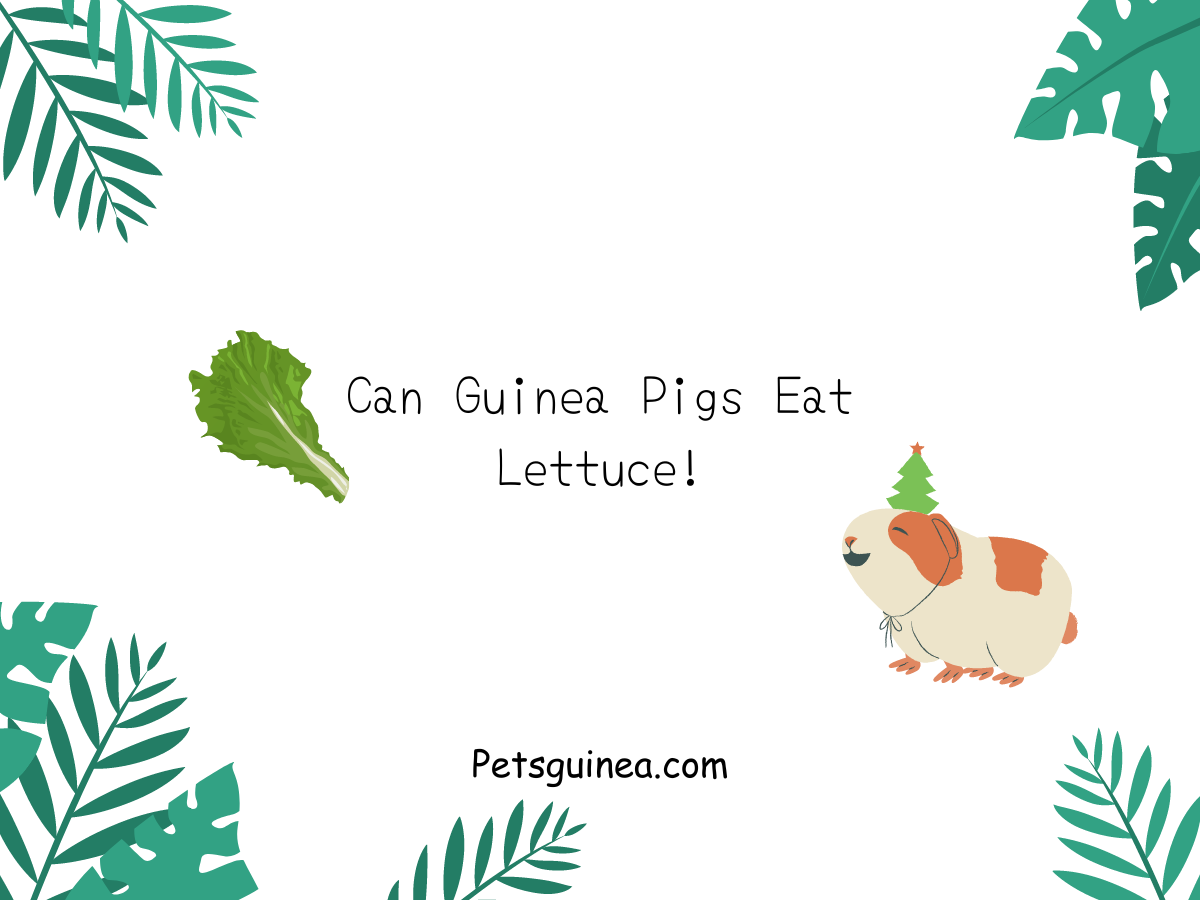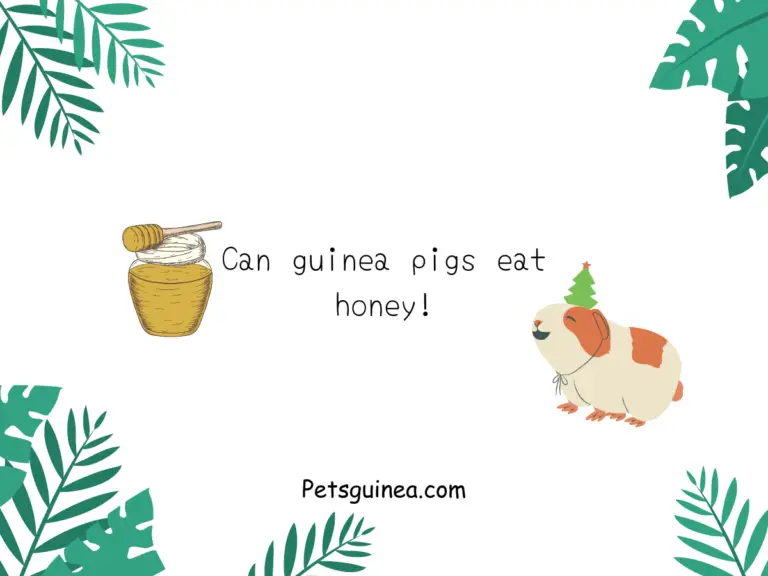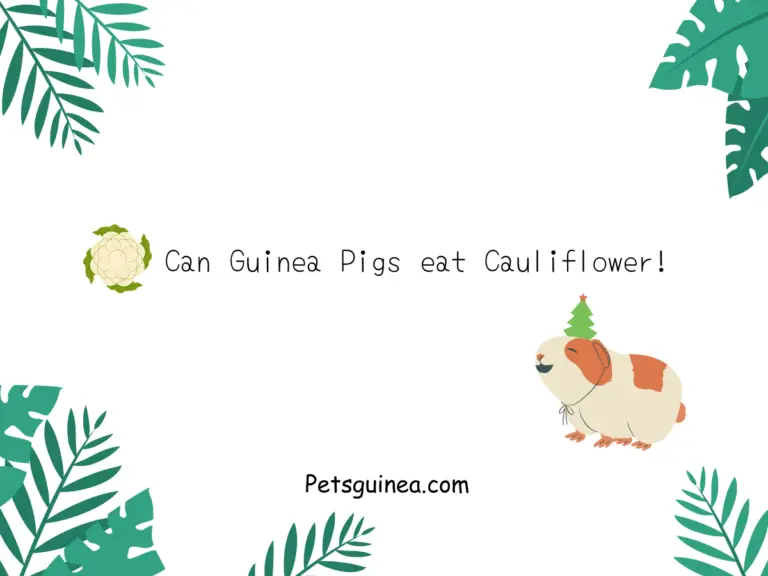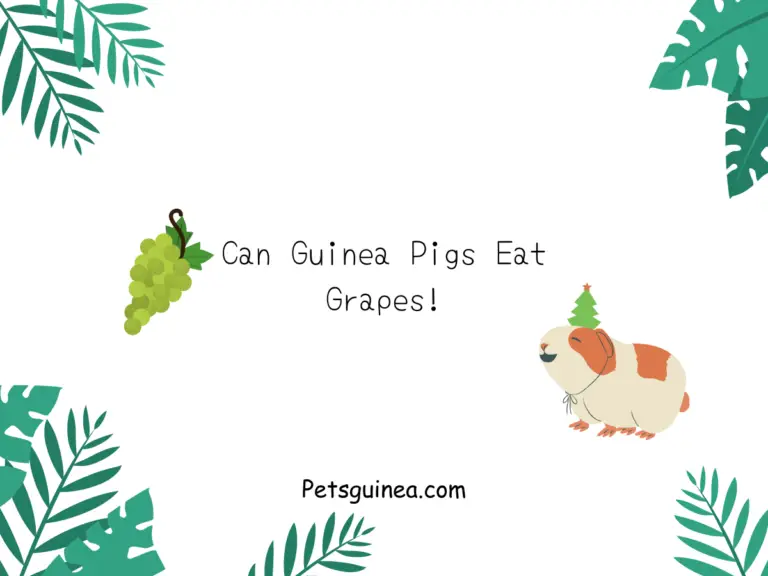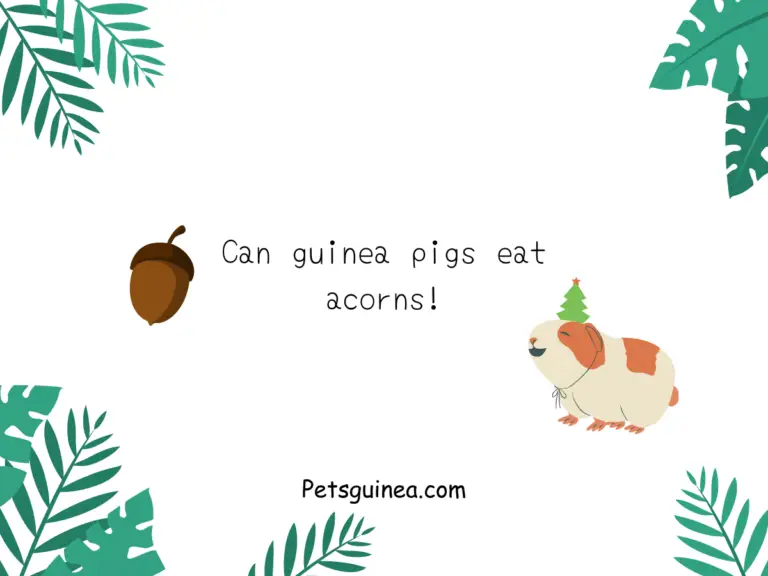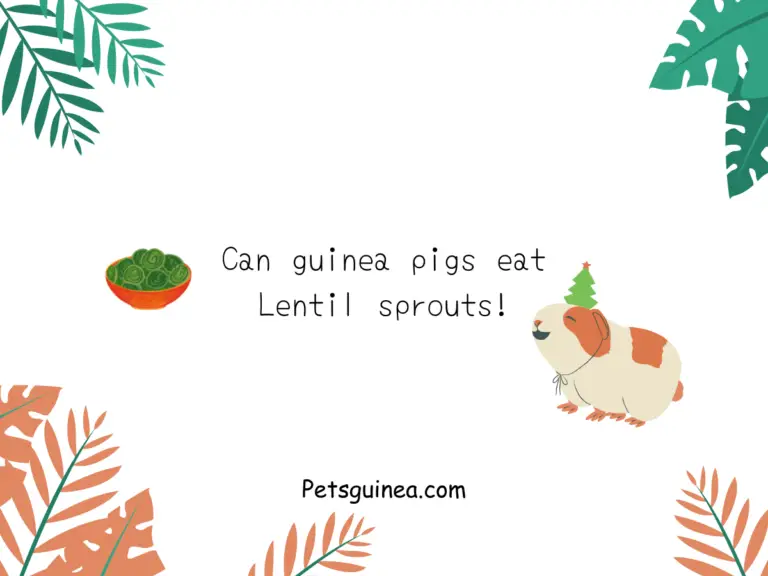Can Guinea Pigs Eat Lettuce? – A Quick Guide
Lettuce is a common salad green readily available worldwide, and it’s no surprise that guinea pig owners might wonder if it’s a suitable treat for their furry friends. This article delves into lettuce and guinea pigs, providing in-depth information about its safety, benefits, downsides, and how to incorporate it into your cavy’s diet.
Quick Facts About Lettuce
Origin:
Lettuce is believed to have originated in the Mediterranean region over 2,400 years ago.
Varieties:
There are numerous lettuce varieties, each with slightly different nutritional profiles and textures. Common types include romaine, iceberg, red, green, and butter lettuce.
Nutritional Value:
Lettuce is generally low in calories and fat but can be a good source of vitamin K, vitamin A (in some varieties), and folate. However, its water content is high and offers limited amounts of other essential nutrients.
Do Guinea Pigs Like Lettuce?
Many guinea pigs enjoy the taste and texture of lettuce. The crunchiness of romaine or red leaf lettuce can particularly appeal to them. However, some guinea pigs might be more drawn to other vegetables. It’s always best to gradually introduce new foods and observe your cavy’s preferences.
Is it Safe for Guinea Pigs to Eat lettuce?
Yes, lettuce is generally safe for guinea pigs in moderation. However, there are a few things to keep in mind:
Nutritional Imbalance:
Due to its high water content and limited nutritional value, lettuce shouldn’t be the primary source of vegetables in a guinea pig’s diet.
Calcium Content:
Some lettuce, particularly iceberg lettuce, are high in calcium. While guinea pigs need some calcium, excessive amounts can contribute to bladder stones.
What Other Benefits Does Lettuce Provide for Your Guinea Pig?
Although not a nutritional powerhouse, lettuce offers some benefits for guinea pigs:
Vitamin C:
Some lettuce varieties, like romaine, contain a small amount of vitamin C, essential for guinea pigs as they cannot produce it themselves.
Hydration:
The high water content of lettuce can help contribute to your guinea pig’s daily hydration needs, especially during hot weather.
Dental Health:
Chewing on crunchy lettuce can help keep your guinea pig’s ever-growing teeth worn down naturally.
What are the Downsides of lettuce for Guinea Pigs?
Here’s a breakdown of the potential downsides of lettuce for guinea pigs:
Limited Nutrients:
Lettuce lacks essential nutrients that guinea pigs need in larger quantities, such as vitamin C and fiber.
Digestive Issues:
Too much lettuce can lead to bloating and diarrhea in guinea pigs due to its high water and low fiber content.
Calcium Issues:
Lettuce varieties like iceberg lettuce are high in calcium, which can contribute to bladder stones if fed in excess.
How Should You Go About Feeding Your Guinea Pig Lettuce?
If you decide to offer lettuce to your guinea pig, follow these guidelines:
Introduce Gradually:
Start with a small piece (around the size of a postage stamp) and monitor your guinea pig for any digestive upset.
Variety is Key:
Offer lettuce as part of a diverse diet with other vegetables rich in vitamin C and fiber, such as bell peppers, broccoli florets, and leafy greens like kale or parsley.
Limit Intake:
A small piece of lettuce (2-3 leaves for an adult guinea pig) 2-3 times a week is sufficient.
Wash Thoroughly:
Always wash lettuce thoroughly under running water to remove any pesticides or dirt before feeding it to your guinea pig.
Is Lettuce Good for Guinea Pig’s Health?
In moderation, lettuce can be a safe and refreshing treat for your guinea pig. However, it shouldn’t be a staple food due to its limited nutritional value. A balanced diet rich in hay, high-quality guinea pig pellets, and various fresh vegetables will ensure your cavy gets all the nutrients it needs to thrive.
What Kind of Lettuce is Bad for Guinea Pigs?
Here are some types of lettuce to avoid feeding your guinea pig:
Iceberg Lettuce:
This variety is high in calcium and low in nutrients, making it a poor choice for guinea pigs.
Wilted or Spoiled Lettuce:
Discard any wilted, slimy, or past its prime, as it can harbor bacteria and make your guinea pig sick.
What to Do If Your Guinea Pig Overeats Lettuce
While unlikely, if you suspect your guinea pig has overindulged in lettuce, here’s what to do:
Monitor Closely:
Watch for signs of digestive upset like bloating, gas, diarrhea, or loss of appetite.
Withhold Lettuce:
Stop offering lettuce for a few days and focus on hay and its regular pellets.
Provide Fresh Water:
Ensure your guinea pig has access to plenty of fresh, clean water to help with hydration.
Seek Veterinary Attention:
Consult your exotic vet immediately if your guinea pig experiences severe diarrhea or lethargy or stops eating.
Can Guinea Pigs Eat Lettuce Every Day?
No, guinea pigs shouldn’t eat lettuce every day. Here’s why:
Nutritional Imbalance:
Daily lettuce consumption can displace other, more nutritious vegetables essential for a balanced diet.
Digestive Issues:
The high water content and low fiber can lead to digestive problems like bloating and diarrhea if consumed daily.
A Balanced Diet for Your Guinea Pig
A healthy diet for your guinea pig should consist of the following:
Unlimited High-Quality Hay:
Hay, like timothy hay, should be the foundation of your guinea pig’s diet, providing essential fiber for gut health and wearing down their teeth.
Guinea Pig Pellets:
Choose a good quality pellet explicitly formulated for guinea pigs, offering essential vitamins and minerals. Limit the amount to prevent overconsumption.
Fresh Vegetables:
Offer a variety of fresh vegetables daily, with lettuce being an occasional treat, not a staple. Focus on vegetables rich in vitamin C and fiber, like bell peppers, broccoli florets, kale, and parsley.
Fresh Water:
Provide and refill a clean water bottle daily to ensure proper hydration .
Conclusion
Lettuce can be a harmless and refreshing treat for your guinea pig when offered in moderation and as part of a balanced diet. Remember, variety is key! Explore a diverse range of vegetables to give your furry friend the essential nutrients they need for a long and healthy life.
Additional Tips :
Consult your exotic vet for concerns about your guinea pig’s diet or health.
Observe your guinea pig’s individual preferences and adjust their vegetable intake accordingly.
Keep uneaten vegetables fresh by storing them in the refrigerator and discarding spoiled ones.
Make mealtime fun and interactive by hiding pieces of lettuce or other vegetables around their cage for them to forage.
FAQs:
Yes, lettuce can be safe for guinea pigs in moderation. However, it’s essential to know its limitations and potential downsides.
Guinea pigs should avoid iceberg lettuce. This variety is high in calcium and low in essential nutrients, offering little benefit to your cavy’s diet.
A small piece of lettuce (around the size of a postage stamp) 2-3 times a week is sufficient for an adult guinea pig.
Guinea pigs can enjoy kohlrabi as part of a balanced diet. However, it’s essential to offer it in moderation and ensure it’s fresh and pesticide-free.
While lettuce can be an occasional treat, many vegetables offer more nutritional value for guinea pigs. Bell peppers, broccoli florets, kale, kohlrabi, and parsley are excellent choices and are rich in vitamin C and fiber.

